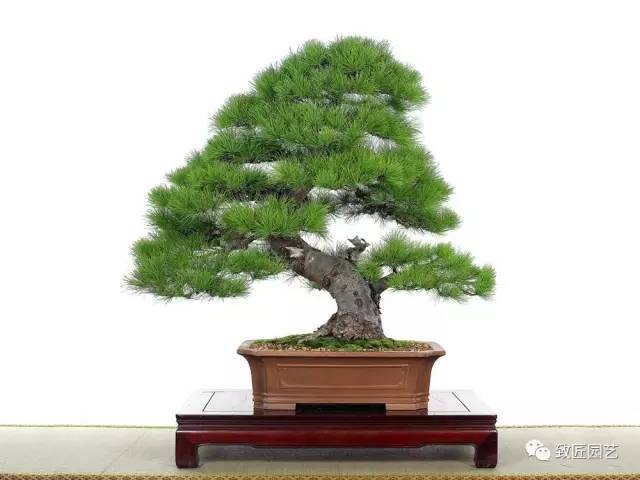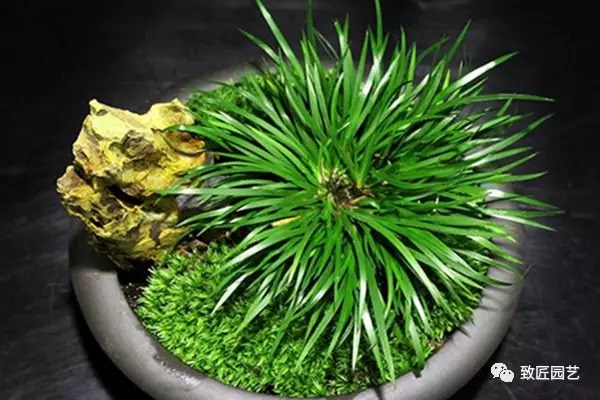Management of Pine Bonsai all Year

January is completely dormant, which is the best viewing period, and the work of flat binding, thinning branches and pulling needles can be carried out. The unfinished leaf picking the year before last should be completed at this time. In addition to extremely cold areas, you can spend the winter outdoors and move into air-conditioned rooms under certain conditions. As the winter monsoon is very easy to dry the basin soil, attention should be paid to watering.
During the coldest time of the year in February, it is also most suitable for shaping, substantial modification, wrapping aluminum wire and thinning branches and pulling needles, and the processed pine trees should be put in the greenhouse for protection. When pests start their activities in late February, they can be sprinkled with 30 times the mixture of lime and sulfur to prevent pests.
Spring returns to the earth in March, the temperature picks up, and winter buds sprout. March is also a good time for revamping and winding aluminum wire, and late March is the best time to change basins. When changing the basin, the upright root of the young tree should be cut off and the winding root should be corrected. When changing pots, the knife is not sharp and the roots are too dry, which can cause damage to the tree. The basin change should be completed by late April as far as possible, and the ratio of red jade soil to tung sand is about 7: 3. After potting, the pine tree needs to see the sun directly. Do not apply fertilizer within a month after changing the basin, and then there will be no harm in getting fat and flooding. March is a good time to cut the buds. After a retraction, you can retract again to force buds out on the opposite side of the branchlet.
The first ten days of April is the most suitable for changing pots. In the middle of April, especially exuberant buds can be picked green (fingers broken buds) as the candle buds begin to grow. Fertilization can start in April. Black pine likes water fertilizer, and solid fertilizer based on nitrogen fertilizer can be applied from April to October, once a month. The basin can be rotated once every 3 weeks to receive light evenly.
The winter buds have grown in the shape of a candle in May, and the unpicked green ones were picked in the first ten days. The crown and branch heads of strong trees will be especially stout, but when the buds stop growing and the needles see green, the control medium buds will be cut off with fingers (they may die with scissors). Aphids are easy to be born at this time, so pay attention to insecticidal disinfection.
There is no important operation in June, killing insects and bacteria on a regular basis.
New buds have grown into needles in July, and early July is a good time for bud pruning. In addition to the weak and strong buds, cut the new buds from the base of the buds in spring, leaving only the old needles of last year. About 1 Murray will sprout twice after 2 weeks. After sprouting, the water absorption of the tree will be temporarily weakened. At this time, the fertilizer can be removed and fertilized when the secondary buds grow. Sprout cutting is a short needle method, which will bring a greater burden to the tree, it is best to cut it once every two years, but the weak pine can not be operated even for two years. Cut the buds from the weak buds and cut the strong buds seven or eight days later.
The secondary buds were retained in August. Trees with sufficient water and fertilizer will grow secondary buds 2 weeks after picking buds, and some strong branches will produce 5 buds. If left untreated, the branches will grow into clumps and destroy the tree shape. At this time, tweezers can be used to remove the buds in the upper and lower direction, leaving two buds horizontally. Generally, the upper strong branches leave weak buds and the lower weak branches leave strong buds, so as to balance the tree potential.
In September, pay attention to the high temperature in late autumn and spray water frequently in the evening. Secondary buds are in a period of vigorous growth, which ensures that there is plenty of water and fertilizer and more fertilizer is applied than in spring. The buds with poor growth can be sprayed with foliar fertilizer once a week. You can also cut the buds in September.
The external growth basically ended in October and turned to internal storage of energy for the winter. The yellowing needles can be peeled off one by one with tweezers. Ensure an adequate supply of fertilizer and strong branches.
The tree posture and leaf color at this time of November is the most beautiful of the year, and keep plenty of fertilizer until the middle of the year. New leaves will be picked in late November to keep the interior well ventilated and well lit. Picking leaves should distinguish between strong and weak buds, cut off the new needle with scissors to leave two millimeters at the petiole, cut more strong buds and cut less weak buds.
During the dormant period in December, the pine trees were moved into the greenhouse in the middle of the month, and the mixture of lime and sulfur could be sprinkled once in two or three days. Unfinished picking of new leaves should be completed at this time, or a good time for pruning.
The picture and text are transferred from the network
Wonderful content
- Prev

How to make calamus bonsai
Acorus calamus is loved by more and more bonsai lovers because of its attractive color, fragrant smell and straight posture. As one of the best matching scenery of bonsai, it has the temperament of literati. The bonsai made with calamus is full of poetry.
- Next

Coriander costs 39.9 yuan per jin? Sow some seeds in the flowerpot for 2 weeks and then eat parsley instead of buying it.
News has emerged in recent days that the price of vegetables in many places has risen because of the flood in Shouguang. Vegetables such as coriander, a common "seasoning" vegetable, cost 39.9 yuan per jin.
Related
- Wuhan Hospital Iron Tree Blooming Result Was Instantly Frightened by the Gardener Master
- Which variety of camellia is the most fragrant and best? Which one do you like best?
- What is the small blue coat, the breeding methods and matters needing attention of the succulent plant
- Dormancy time and maintenance management of succulent plants during dormancy
- Minas succulent how to raise, Minas succulent plant pictures
- What are the varieties of winter succulent plants
- How to raise succulent plants in twelve rolls? let's take a look at some experience of breeding twelve rolls.
- Attention should be paid to water control for succulent plants during dormant period (winter and summer)
- Watering experience of twelve rolls of succulent plants
- Techniques for fertilizing succulent plants. An article will let you know how to fertilize succulent plants.

